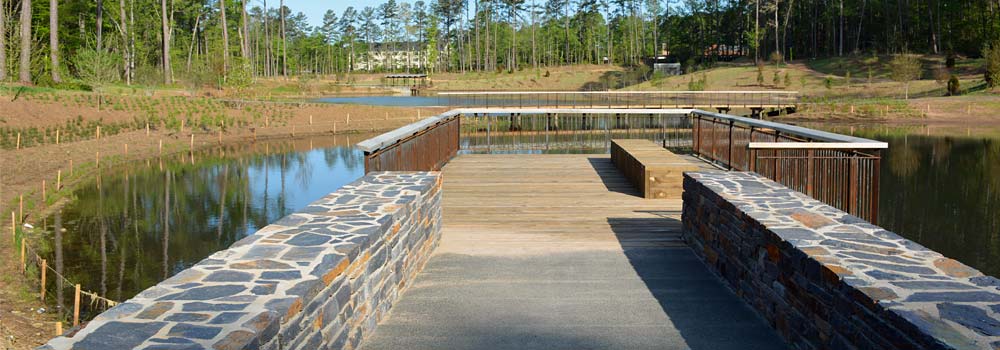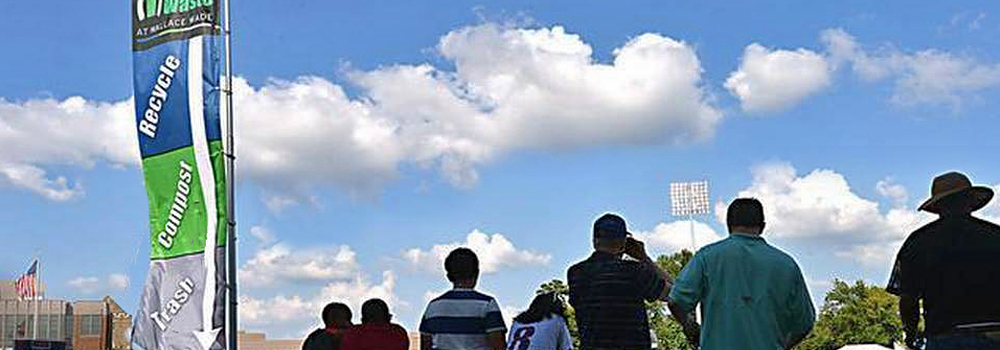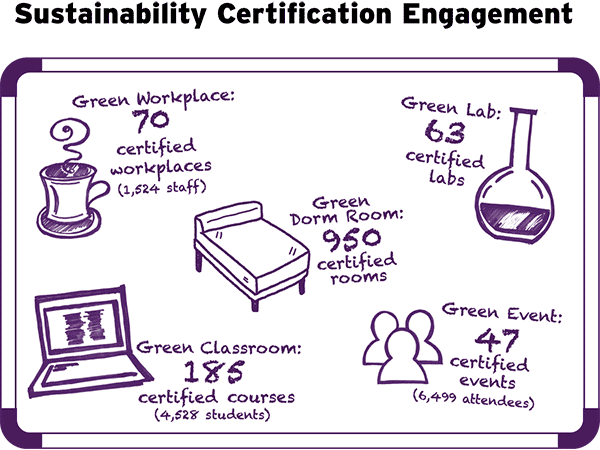Duke remains on track with the Climate Action Plan commitment to become carbon neutral by 2024. The fiscal year 2015 (FY15) greenhouse gas inventory shows a 19% decrease of overall emissions from the 2007 baseline. This is a 2% increase from last year's GHG inventory due primarily to employee commuting and air travel emissions increasing in FY15.
Duke's Sustainability Strategic Plan continues to encompass more areas of the campus footprint. This year, the Campus Sustainability Committee focused attention on evaluating campus natural resources to inform future master planning efforts and maintain Duke's "campus in the forest." In spring 2015, the Duke Board of Trustees voted to officially recognize the importance of two natural areas on campus, Anderson and Chapel Woods. These areas are now protected as important resources for education, conservation and aesthetic value.

Duke's overall emissions are down 19% from a 2007 baseline.
While energy emissions are down 33%, transportation emissions have risen 32%. Many peer institutions have experienced a similar increase in single-occupancy vehicle use, potentially due to lower gas prices nationwide. With commuting and air travel making up 33% of Duke's emissions, it is essential to further develop alternative transportation resources and incentives to reduce emissions from travel.

During the last year, the Duke Carbon Offsets Initiative (DCOI) provided 26 Duke employees with an energy audit of their home, a customized energy report and access to a low-interest loan rate for energy efficiency upgrades. DCOI estimates this project could help avoid the release of 260 tons of carbon dioxide over 10 years, which is equivalent to removing 54 passenger vehicles from the road for one year.

Duke has achieved a 40% reduction in potable water use since 2006.
Completed in spring 2015, Duke's new storm water reclamation pond is expected to save 100 million gallons of potable city water, the equivalent of 151 Olympic swimming pools, per year. Water from the pond will be used at the nearby Chilled Water Plant, which pumps water across campus to cool buildings.
In addition to saving water, the 12-acre site provides a space for recreation and education. The area includes a nearly mile-long walking loop, 41,000 plants including 40 varieties of trees, and opportunities for research and learning. Trees that were taken down during the construction process have been reused or donated.


Despite an almost 2,000 person increase in Duke's campus population, the amount of waste produced annually on campus has fallen by approximately 900 tons since 2012. In FY15, the average person on campus produced 69 pounds less landfill material in a year compared with FY12.
Duke's overall campus recycling rate is 32% in FY15, compared with 28% in FY12.
During the 2014 football season, more than 70 volunteers helped Duke pilot a Zero Waste Game Day program in Wallace Wade Stadium. On average, 51% of waste was recycled or composted throughout the season, resulting in an increase in the waste diversion rate of 155% compared to the 2013 season.
The highest percentage of total waste diverted in a single game during the 2014 season was 65% when Duke played rival University of North Carolina on November 20. In the 2015 season, Duke is striving for 90% diversion of football game day waste to become first ACC waste free football program.


Students, faculty and staff continue to reduce their environmental impact through the use of engaging tools including Duke's sustainability certifications.

Over the past year, the Duke Carbon Offsets Initiative (DCOI) piloted a program for Duke employees to install solar panels on their homes at a 10-20% discount. This pilot will test the ability of Duke University to generate greenhouse gas emission reductions through these employee-based residential solar installations.
Free residential solar assessments were provided to 294 employees. Twenty-nine of these employees plan to install solar on their homes, totaling 152 kilowatts of solar capacity.
Once installed, these solar panels will provide the clean energy equivalent to changing 2,000 incandescent light bulbs to compact fluorescent bulbs annually. Over the life of the panels, that is equivalent to changing more than 50,000 light bulbs.

In the coming year, Duke's Campus Sustainability Committee will focus attention on defining metrics and setting targets in the areas of Procurement and Sustainable Investment. Several additional projects are expected to be completed over the course of fiscal year 2016:
With fewer than 10 years remaining until Duke's carbon neutrality target of 2024, Sustainable Duke looks forward to another year of collaboration with many partners to incorporate sustainability into infrastructure, operations and education at Duke.